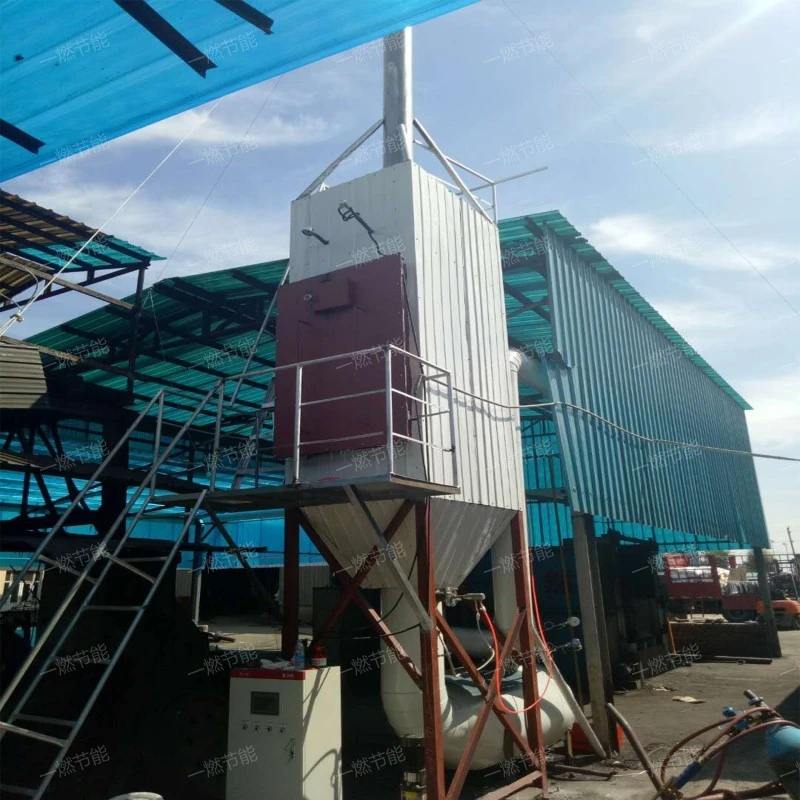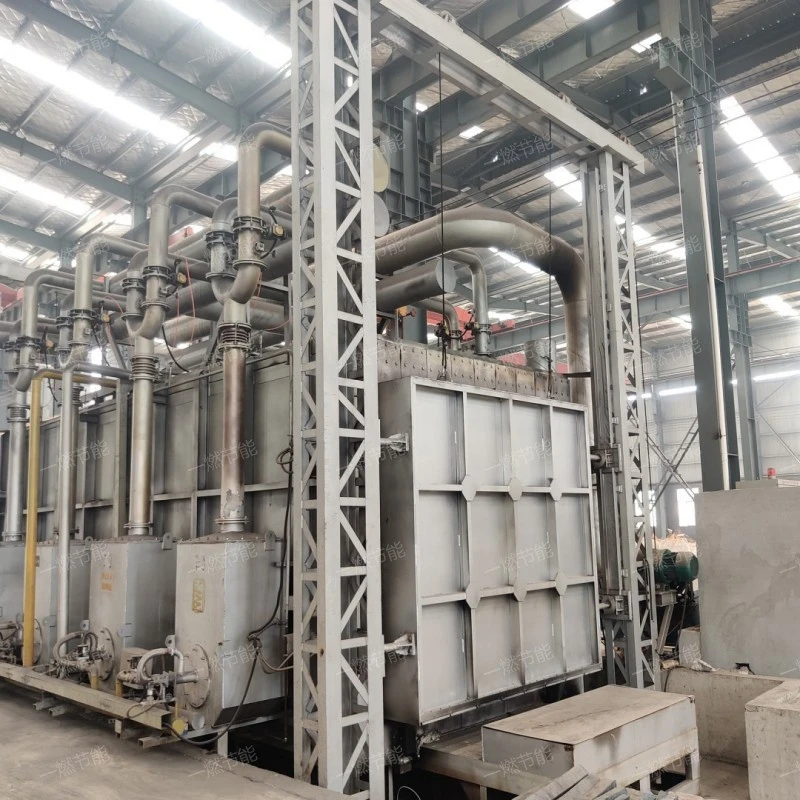What is a SCR low-temperature catalyst denitrification system? How much is the price of the SCR denitration system?
SCR low-temperature catalyst denitrification systemthat is, selective catalytic reduction technology is a technology used to reduce the emission of nitrogen oxides in flue gas.,the advantage is It is famous for its high-efficiency denitration ability, which can usually reach more than 90% denitration efficiency. This means that the SCR low-temperature catalyst denitrification system technology can significantly reduce the concentration of nitrogen oxides (NOx) in flue gas and make it meet strict environmental protection emission standards. This high-efficiency denitration ability is mainly due to the promotion of the catalyst, which makes the chemical reaction between reductant and NOx more rapid and thorough.、The initial investment of technology may be high, but in the long run, its economic feasibility is remarkable. The high-efficiency denitration ability of SCR low-temperature catalyst denitrification system technology can significantly reduce the environmental emission cost of enterprises and avoid fines and legal risks due to illegal emissions. In addition, SCR low-temperature catalyst denitrification system technology can also reduce operating costs and improve the economic benefits of enterprises by recycling heat energy.、There are many kinds of catalysts used in the technology, including vanadium-based catalysts and titanium-based catalysts, which can promote the chemical reaction between reductant and NOx at a lower temperature. At the same time, the active components and carrier materials of the catalyst are constantly being developed and improved to improve its catalytic efficiency and service life. This enables the SCR low-temperature catalyst denitrification system technology to maintain efficient denitrification capability in a wider temperature range and more complex flue gas conditions.、Technology has been developed and applied for many years, and it is mature and stable. The SCR low-temperature catalyst denitrification system has high reliability and stability, and can maintain stable denitrification efficiency under various working conditions. In addition, the SCR low-temperature catalyst denitrification system technology has good adaptability and adjustability, and can be adjusted and optimized according to different flue gas components and emission requirements.、It is famous for its high-efficiency denitration ability, which can usually reach more than 90% denitration efficiency. This means that the SCR low-temperature catalyst denitrification system technology can significantly reduce the concentration of nitrogen oxides (NOx) in flue gas and make it meet strict environmental protection emission standards. This high-efficiency denitration ability is mainly due to the promotion of the catalyst, which makes the chemical reaction between reductant and NOx more rapid and thorough.。The following is to introduce the SCR low-temperature catalyst denitrification system:
1、Brief introduction of SCR low-temperature catalyst denitrification system
SCR low-temperature catalyst denitrification systemdelective catalytic reduction technology is an efficient flue gas denitrification technology.,is designed by One-combustion energy saving with advanced technology。

SCR low-temperature catalyst denitrification system
2、Working principle of SCR low-temperature catalyst denitrification system
SCR low-temperature catalyst denitrification systemin the course of work,Ammonia gas or other suitable reducing agent (such as urea aqueous solution) is sprayed into the flue gas upstream of the catalyst at high temperature. Under the action of catalyst, the reducing agent selectively reacts with nitrogen oxides (NOx) in flue gas to generate pollution-free nitrogen and water vapor. Because NH3 is selective, it only reacts with NOx and basically does not react with O2, so this technology is called selective catalytic reduction denitrification.,The technology is suitable for many industries and processes, such as coal-fired power plants, iron and steel smelting, cement production and so on. These industries will produce a large number of NOx emissions in the production process, and the SCR low-temperature catalyst denitrification system technology can provide effective denitrification solutions for them. In addition, the gate technology can be adjusted and optimized according to different flue gas components and emission requirements to meet different denitration requirements.、Technology has been developed and applied for many years, and it is mature and stable. The SCR low-temperature catalyst denitrification system has high reliability and stability, and can maintain stable denitrification efficiency under various working conditions. In addition, the SCR low-temperature catalyst denitrification system technology has good adaptability and adjustability, and can be adjusted and optimized according to different flue gas components and emission requirements.、The by-products produced by the technology are mainly nitrogen and water vapor, which are harmless to the environment and will not cause secondary pollution. Compared with the traditional wet flue gas denitrification technology, the SCR low-temperature catalyst denitrification system technology does not need to use a lot of water resources and will not produce pollutants such as wastewater, which is more in line with the requirements of environmental protection and sustainable development.、There are many kinds of catalysts used in the technology, including vanadium-based catalysts and titanium-based catalysts, which can promote the chemical reaction between reductant and NOx at a lower temperature. At the same time, the active components and carrier materials of the catalyst are constantly being developed and improved to improve its catalytic efficiency and service life. This enables the SCR low-temperature catalyst denitrification system technology to maintain efficient denitrification capability in a wider temperature range and more complex flue gas conditions.、Intelligent control is gradually realized. By integrating advanced control system and sensor technology, the SCR low-temperature catalyst denitrification system can monitor the composition and emission concentration of flue gas in real time, and automatically adjust the injection amount of reductant and the active state of catalyst to ensure the stability and reliability of denitrification efficiency.,Economically feasible,Less secondary pollution,Promote sustainable development,Stable operation,Less secondary pollution,the full name is selective catalytic reduction technology, which is an advanced flue gas denitrification technology.,it has the functions of environmental protection, Improve energy efficiency, Promote sustainable development, Improve working conditions and environmental protection。

SCR low-temperature catalyst denitrification system
3、SCR low-temperature catalyst denitrification system video detail
One-combustion energy saving provides customers with on-site high-definition video, fully demonstrates the advantages of on-site productt operation, and helps customers to deeply understand the SCR low-temperature catalyst denitrification system production process and production site, and gain favorable comments and recognition from customers.。
SCR low-temperature catalyst denitrification system
As you can see from the live video.,One-combustion energy saving delective catalytic reduction technology is an efficient flue gas denitrification technology.。
4、SCR low-temperature catalyst denitrification system function
SCR low-temperature catalyst denitrification systemmultifunctional, with functions such as environmental protection, Improve working conditions, environmental protection, Improve energy efficiency and Promote sustainable development,is an advanced SCR low-temperature catalyst denitrification system developed by our company in combination with the actual situation of the industry。

SCR low-temperature catalyst denitrification system
5、Structural characteristics of SCR low-temperature catalyst denitrification system
The SCR low-temperature catalyst denitrification system has the following structure
- Catalytic reduction reaction
- Flue gas mixing and distribution system
- Reactor
- Reducing agent supply
- Flue gas mixing and distribution
Under the action of catalyst, the reductant and NOx in flue gas undergo selective catalytic reduction reaction to generate nitrogen and water vapor.
Ensure that the flue gas and reducing agent are fully mixed in the reactor to improve the denitrification efficiency.
It is the core component of SCR low-temperature catalyst denitrification system technology, and it is equipped with catalyst to promote the chemical reaction between reductant and NOx.
Reducing agents such as liquid pure ammonia or ammonia water (aqueous solution of ammonia) are evaporated and mixed with diluted air or flue gas.
The mixed reducing agent and flue gas are fully mixed in the mixing tube and evenly distributed to the catalyst reactor through the distribution system.

SCR low-temperature catalyst denitrification system
6、Company selection skills
Choosing a suitable SCR low-temperature catalyst denitrification system manufacturer requires comprehensive consideration of many aspects. First of all, we should examine the strength of manufacturers, including production capacity, R&D team and industry experience. Strong manufacturers can better ensure product supply and innovation ability. Secondly, product quality is the key, and it is evaluated by product certification, material selection and manufacturing process to ensure the durability of products. Product performance can not be ignored, so we should choose manufacturers with matching technical parameters, rich types and customized services according to actual needs. After-sales service is equally important. Professional and timely service team, perfect after-sales content and extensive service network can make users worry about nothing. In addition, market reputation is also an important reference. We can understand the reputation and status of manufacturers through customer evaluation, industry reputation and award-winning honor. Finally, it is necessary to analyze the price and cost performance, and on the premise of ensuring the quality and performance, choose a manufacturer with reasonable price and high cost performance, so as to purchase SCR low-temperature catalyst denitrification system products that meet the demand and have good cost performance.。

One-combustion energy saving
SCR low-temperature catalyst denitrification systemit has the functions of Improve working conditions, environmental protection, Improve working conditions, Improve energy efficiency and Promote sustainable development,the advantage is The technology is suitable for many industries and processes, such as coal-fired power plants, iron and steel smelting, cement production and so on. These industries will produce a large number of NOx emissions in the production process, and the SCR low-temperature catalyst denitrification system technology can provide effective denitrification solutions for them. In addition, the gate technology can be adjusted and optimized according to different flue gas components and emission requirements to meet different denitration requirements.、The by-products produced by the technology are mainly nitrogen and water vapor, which are harmless to the environment and will not cause secondary pollution. Compared with the traditional wet flue gas denitrification technology, the SCR low-temperature catalyst denitrification system technology does not need to use a lot of water resources and will not produce pollutants such as wastewater, which is more in line with the requirements of environmental protection and sustainable development.、Intelligent control is gradually realized. By integrating advanced control system and sensor technology, the SCR low-temperature catalyst denitrification system can monitor the composition and emission concentration of flue gas in real time, and automatically adjust the injection amount of reductant and the active state of catalyst to ensure the stability and reliability of denitrification efficiency.、The initial investment of technology may be high, but in the long run, its economic feasibility is remarkable. The high-efficiency denitration ability of SCR low-temperature catalyst denitrification system technology can significantly reduce the environmental emission cost of enterprises and avoid fines and legal risks due to illegal emissions. In addition, SCR low-temperature catalyst denitrification system technology can also reduce operating costs and improve the economic benefits of enterprises by recycling heat energy.、It is famous for its high-efficiency denitration ability, which can usually reach more than 90% denitration efficiency. This means that the SCR low-temperature catalyst denitrification system technology can significantly reduce the concentration of nitrogen oxides (NOx) in flue gas and make it meet strict environmental protection emission standards. This high-efficiency denitration ability is mainly due to the promotion of the catalyst, which makes the chemical reaction between reductant and NOx more rapid and thorough.,at the start of the operation,Under the action of catalyst, reducing agents (such as ammonia, urea, etc.) react with nitrogen oxides in flue gas to convert them into harmless nitrogen and water vapor.。
Related recommendation
-

Introduction to Track type heating furnace and heating furnace working principle
2025-5-27 -

Introduction to Low temperature catalytic reduction flue gas denitrification equipment, how much is the price of the SCR denitration system?
2025-5-27 -

Introduction to Regenerative tube roasting furnace, introduction to forging furnace function advantages and characteristics
2025-5-27 -

Introduction to Step furnace flue gas denitrification equipment and SCR flue gas denitrification advantages and features
2025-5-27 -

Introduction to Rotary quenching heating furnace, heating furnace specifications, model parameters
2025-5-27 -

Introduction to Energy saving and environmentally friendly through forging heating furnace and Forging furnace advantages and features
2025-5-27 -

What is a Intelligent gas trolley furnace? How much is the price of the forging furnace?
2025-5-27 -

Introduction to Car Bright Annealing Furnace, introduction to Forging furnace advantages and characteristics
2025-5-27 -

What is a Large electric furnace? Trolley electric furnace specifications, models, and parameters
2025-5-27 -

What is a Stepping bottom quenching heating furnace? How much is the price of the forging furnace?
2025-5-27




